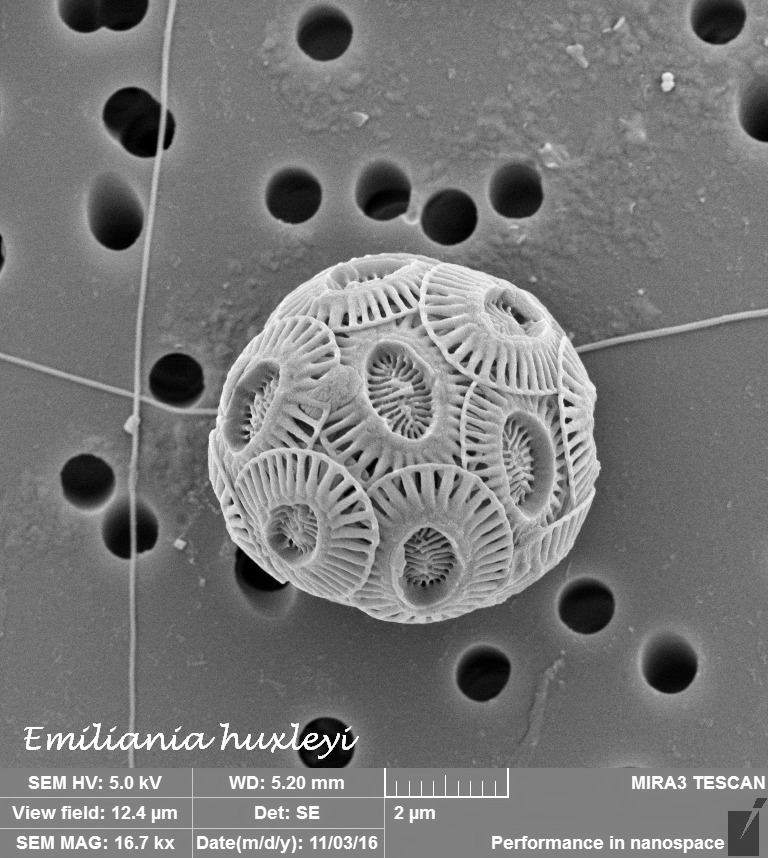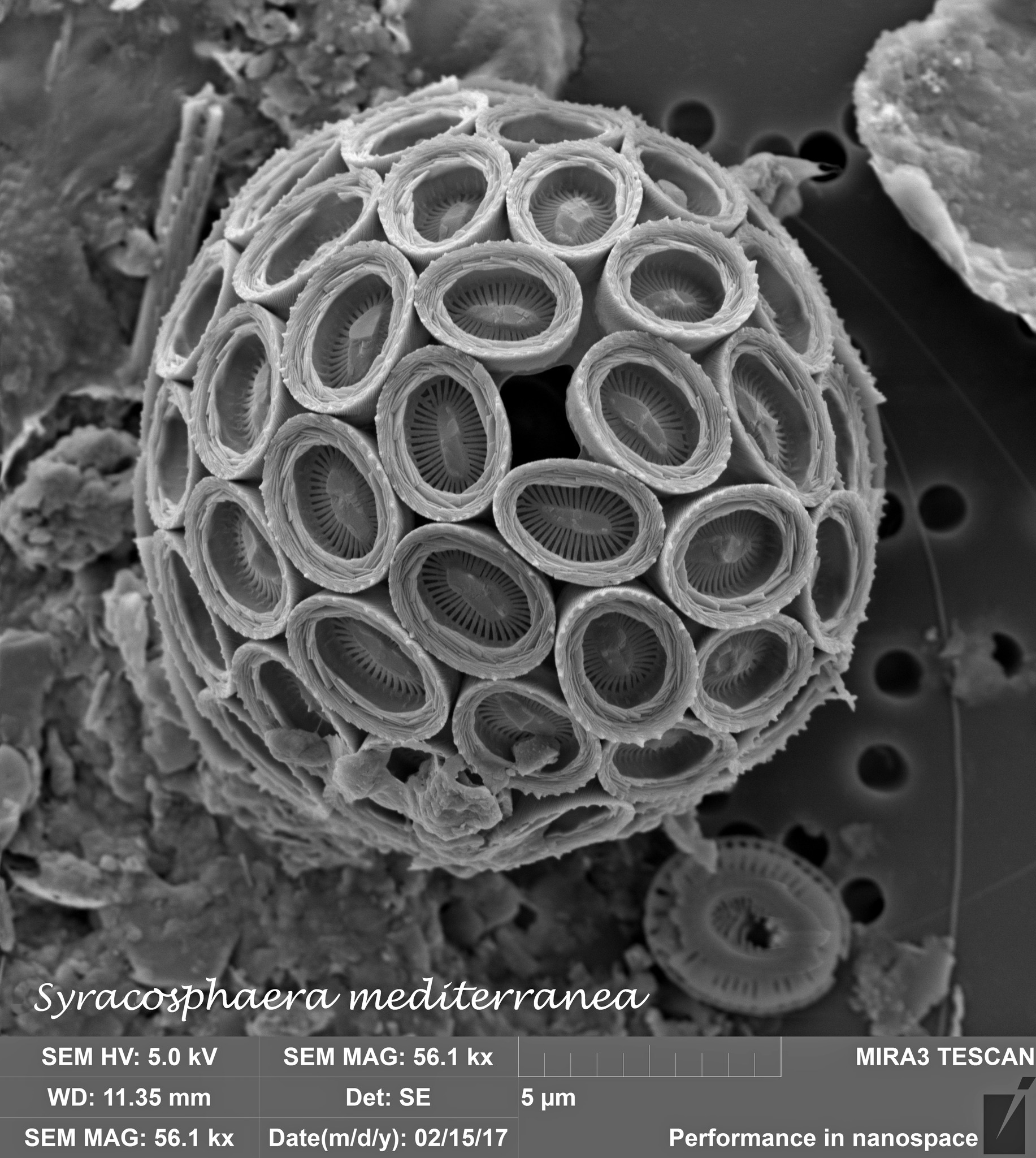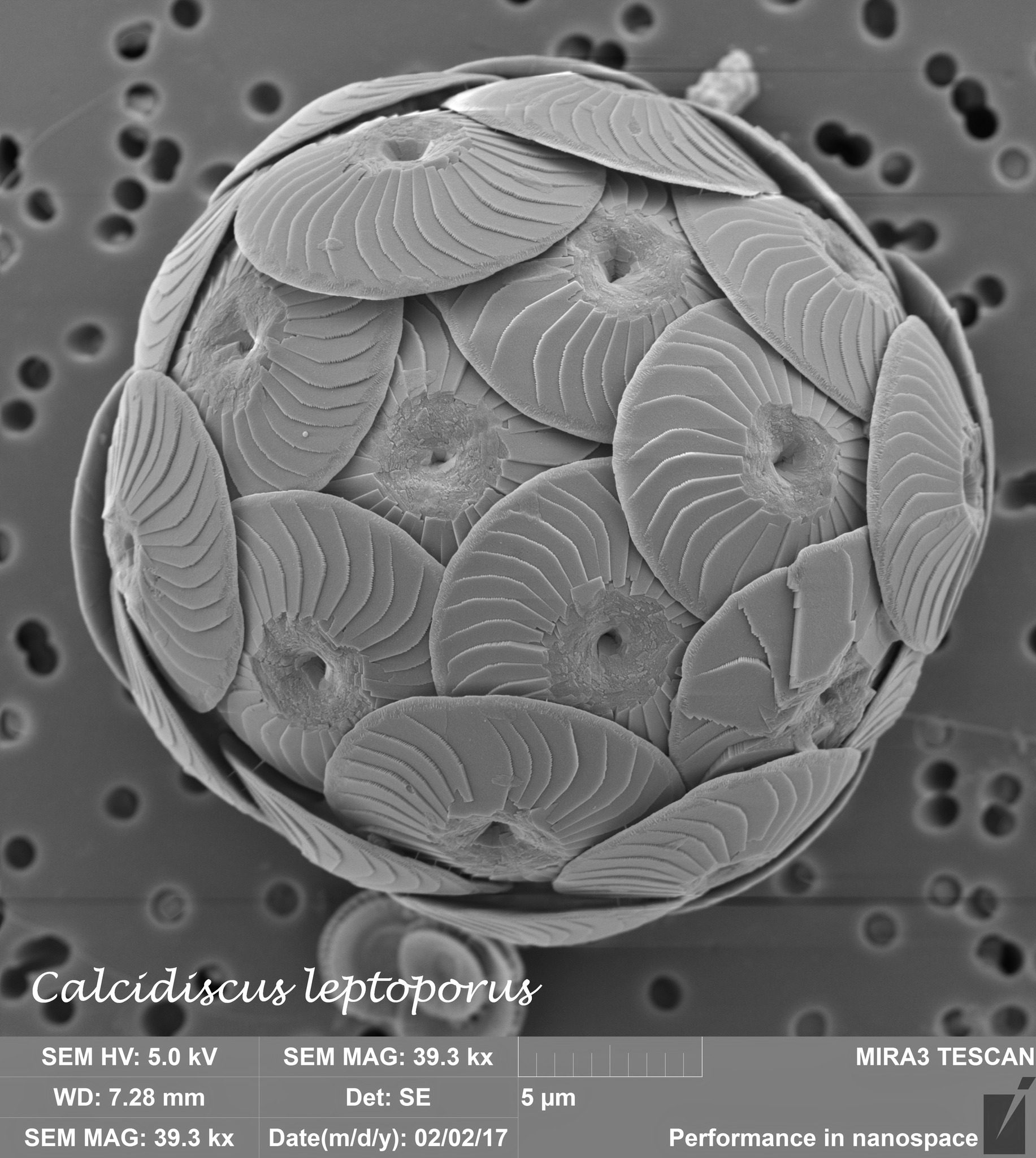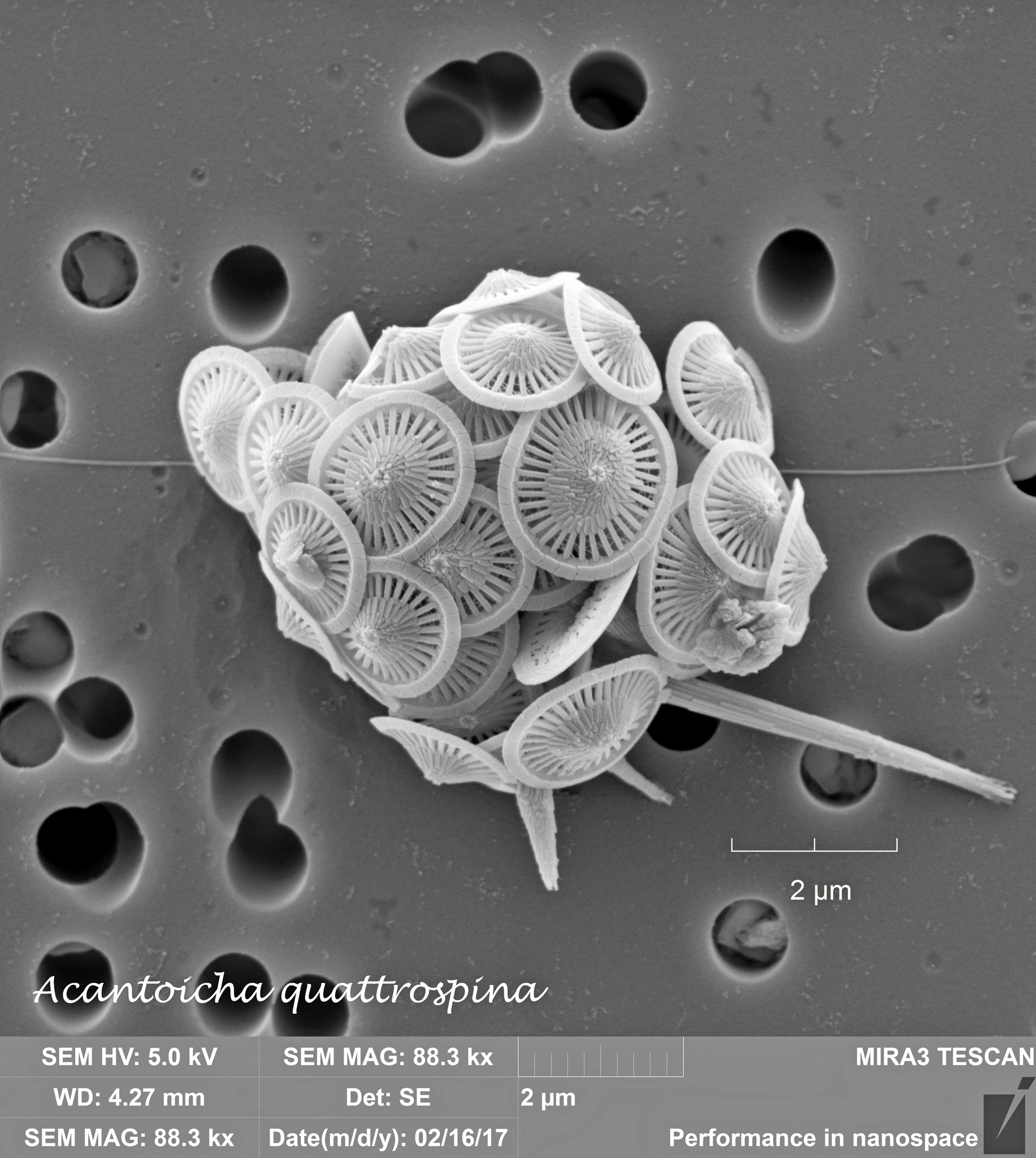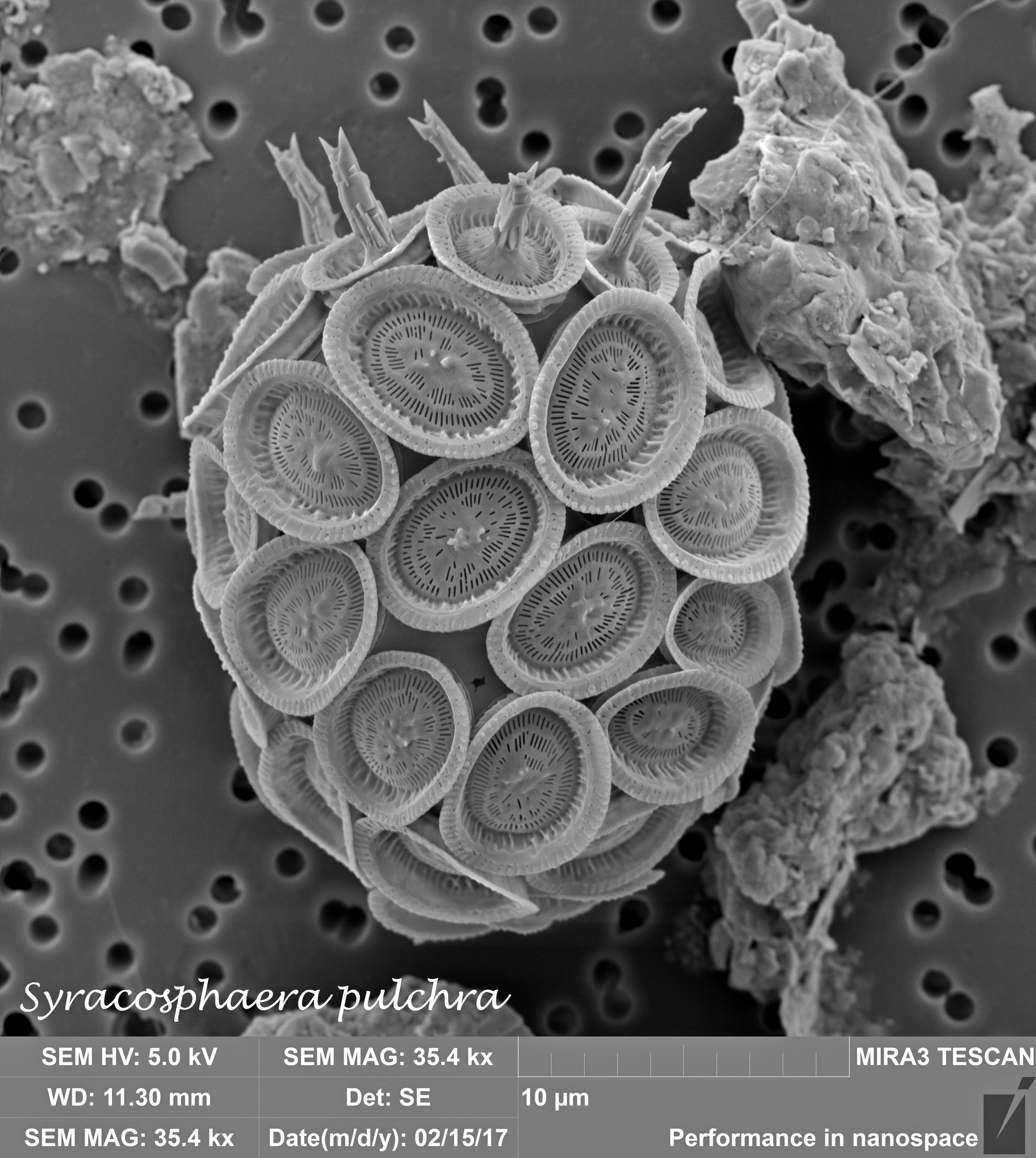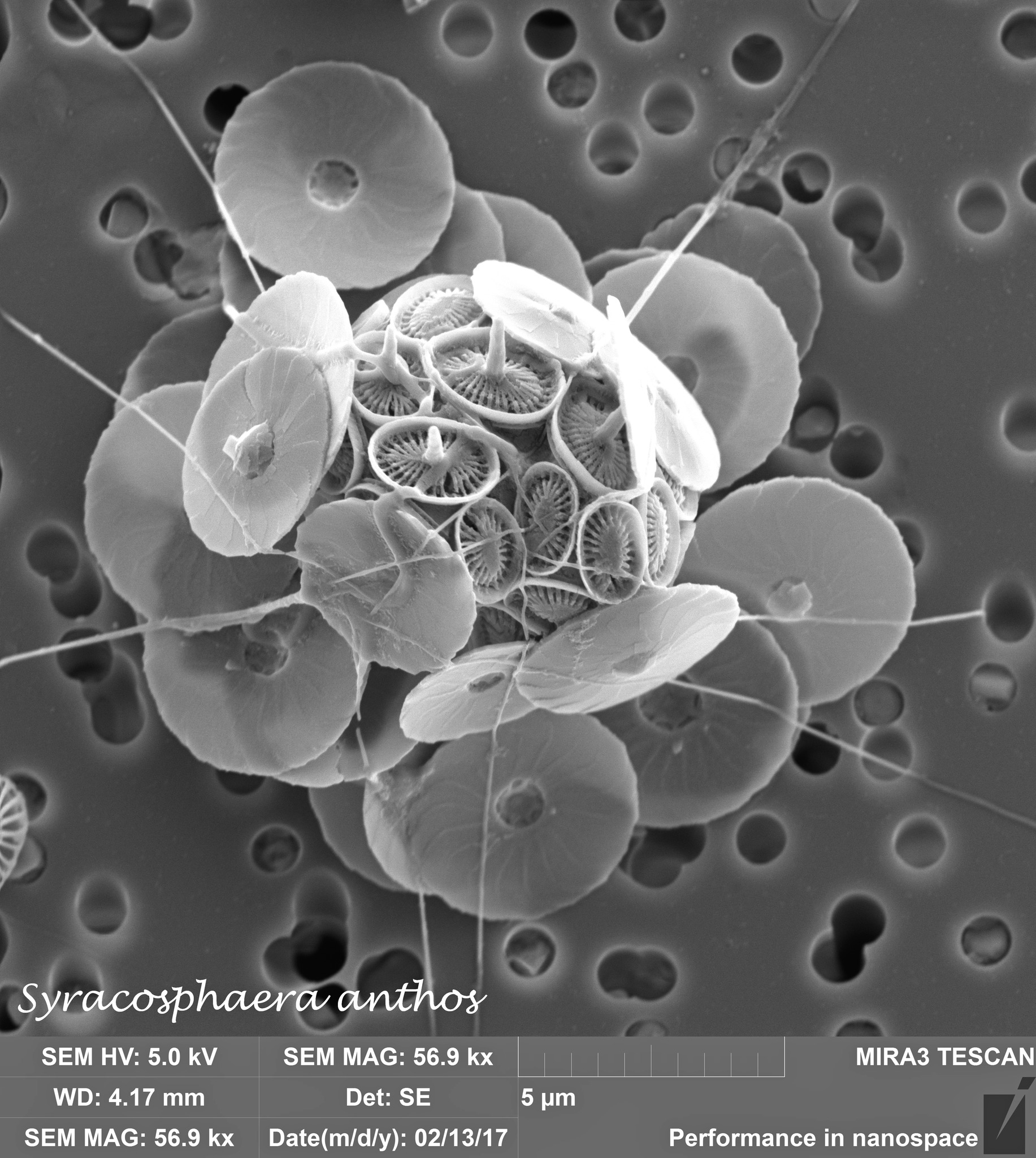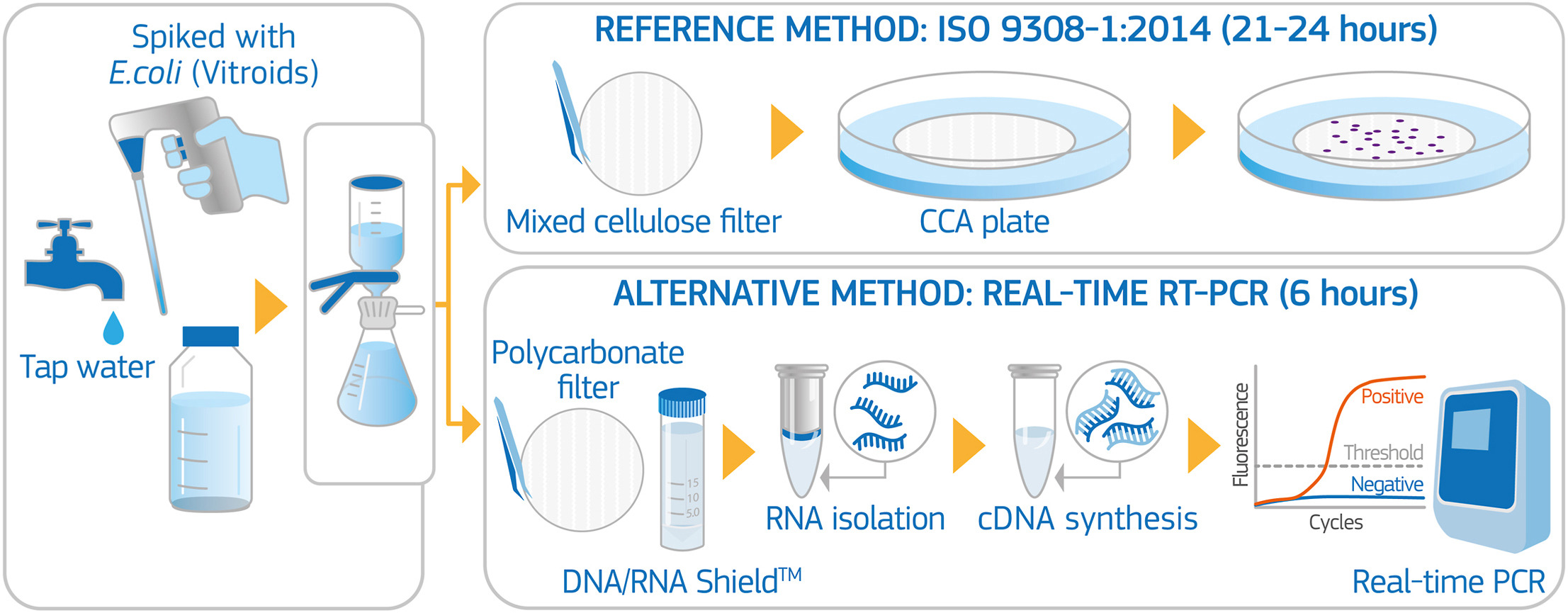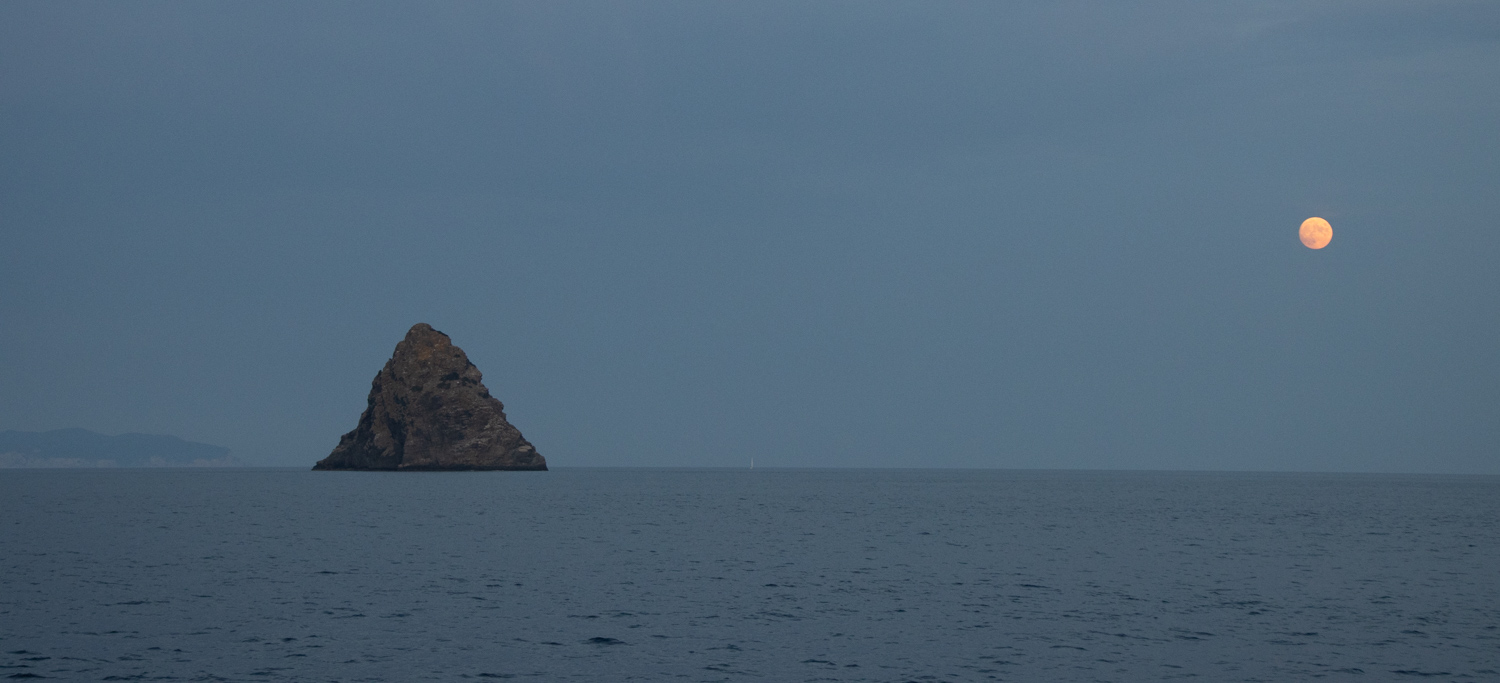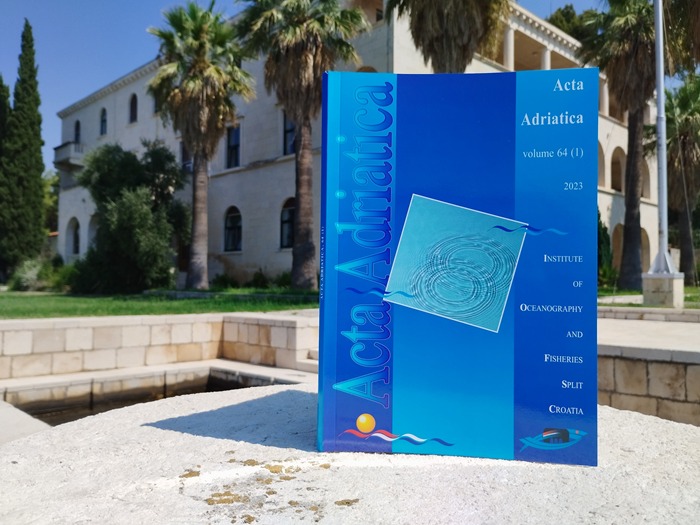A part of the planktonic organisms – the phytoplankton – is able to photosynthesize and produces oxygen and organic matter in the sea like plants.
Phytoplankton organisms usually come into focus when marine blooms occur, but phytoplankton is immensely important to our ecosystem and forms the basis of marine life. The Adriatic Sea is interesting because of the great diversity of the phytoplankton community.
Coccolithophores are single-celled phytoplankton organisms characterised by the structure of their calcite shells, which significantly influence the chemistry of seawater and are particularly important for the carbon cycle and thus for the Earth’s climate. The identification of coccolithophores is based on the characteristic morphology of the calcite plates that cover these organisms. Due to the extremely small size of these organisms, there have been few studies of coccolithophores in the Adriatic until the application of electron microscopy.
Scientists from our Laboratory of Plankton and Shellfish Toxicity, in collaboration with their colleague Dr. J. Godrijan from the Ruđer Bošković Institute in Zagreb, have published a paper summarising all previous work on coccolithophores in the Adriatic since the beginning of the last century. The aim of the work was to connect all previous studies on coccolithophores using light and electron microscopy.
The list of coccolithophore species, based on historical records, was revised and compared with recent research in the coastal and open waters of the Adriatic Sea. In addition, the species names were revised according to the new nomenclature resulting from the knowledge of the different life cycles and thus the forms of each species.
A great diversity of coccolithophores was recorded not only in the open waters of the Adriatic but also in coastal areas and estuaries. A total of 141 morphotypes of coccolithophores were recorded, 124 in the central Adriatic, 54 in the northern, and 48 in the southern. A particularly important contribution of this work is a large number of consolidated photographs of coccolithophores (92) from the Adriatic, taken with an electron microscope, which will contribute significantly to better identification in future taxonomic research.
The results were published in a special issue of the journal Water – > https://www.mdpi.com/2073-4441/15/3/603
